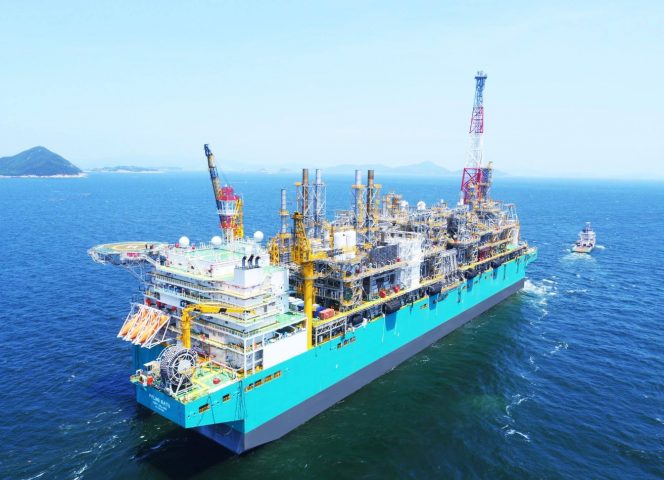Report: Petronas targeting 1Q 2020 for 2nd FLNG unit start-up

[ad_1]
Malaysian oil and gas company Petronas plans to bring online its second Floating LNG unit in the first quarter of 2020.

The timeline was reportedly shared by Petronas’ CEO Wan Zulkiflee in Shanghai at LNG2019 conference on Tuesday, Reuters has reported.
Petronas was the first company in the world to bring an FLNG unit to production when its first FLNG unit Satu started operations in November 2016 at the Kanowit gas field, offshore Sarawak, Malaysia.
The Satu FLNG, which can produce 1.2 million tonnes of LNG per year, was last month moved to the Kebabangan (KBB) cluster field, offshore Sabah.
Petronas has been working on the construction of its second FLNG unit, and the 393-meter-long hull was floated out from the Green Dock 3 to anchor at the quayside of the Samsung shipyard marking in May 2016.
The delivery, however, has been delayed after the company in 2016 decided to cut spending following a difficult year caused by low oil prices.
According to available information, Petronas’ second FLNG Dau will have a larger capacity compared to the first unit, coming in at 1.5 million tonnes of LNG per year. Once completed, the PFLNG2 will weigh 134,000 tonnes and will enable the liquefaction, production and offloading processing of natural gas in the Rotan field, 240 kilometers offshore Sabah.
There are now only three operational open sea FLNG projects in the world.
Apart from Petronas’ Satu unit, there are Perenco’s FLNG unit offshore Cameroon which sent its first LNG cargo in May last year, and Shell’s Prelude FLNG offshore Australia which last month shipped its first condensate cargo, and has yet to ship its first LNG.
In a report issued earlier this year, energy intelligence firm Wood Mackenzie said that FLNG, while offering lower capital investment, is not without challenges.
Wood Mackenzie has indicated that that future project opportunities are in short supply as FLNG competes for capital and buyers in a busy LNG market.
Liam Kelleher, Woodmac’s research analyst, Global LNG, said in a report in January that the post-2014 oil price crash and the view that the LNG market was oversupplied saw sanctioned volumes of new-supply LNG drop considerably between 2015 and 2017.
“Throughout these stagnant years, FLNG was a bright spot in the market and gained industry confidence – three of the seven major projects to take FID between 2015 and 2018 were FLNG developments. Furthermore, the first FLNG cargo was shipped in 2017 with three projects now operational,” Kelleher said.
The energy intelligence firm also reminded of FLNG projects that were canceled – Sunrise in (Timor Leste/ Australia) and (Abadi/Indonesia) – as governments of countries where the offshore gas fields are located decided to pursue an onshore development option.
The reason for this is that the governments are worried by the transfer of jobs to foreign shipyards during construction and to offshore workers during operation.
Offshore Energy Today Staff
Source link







